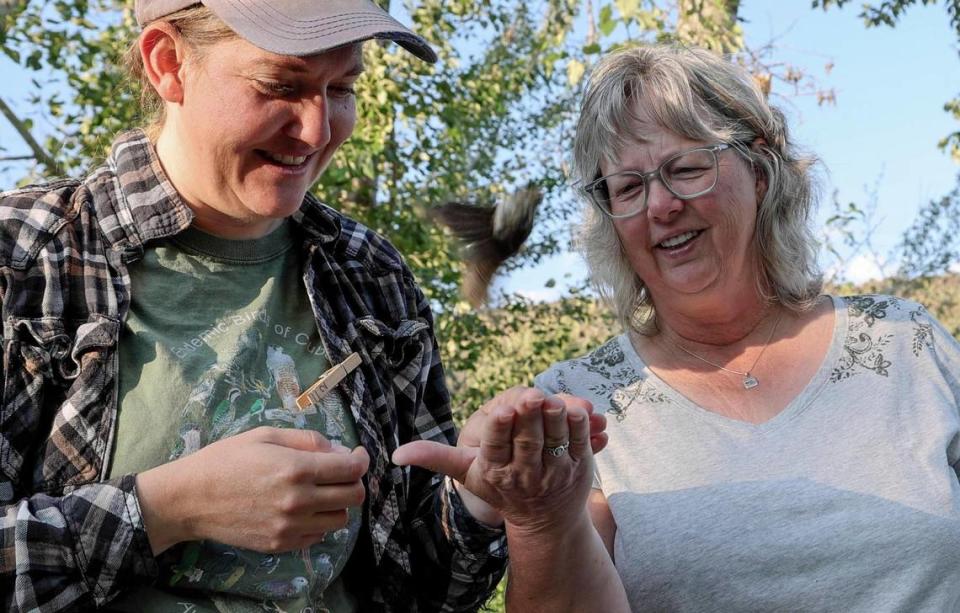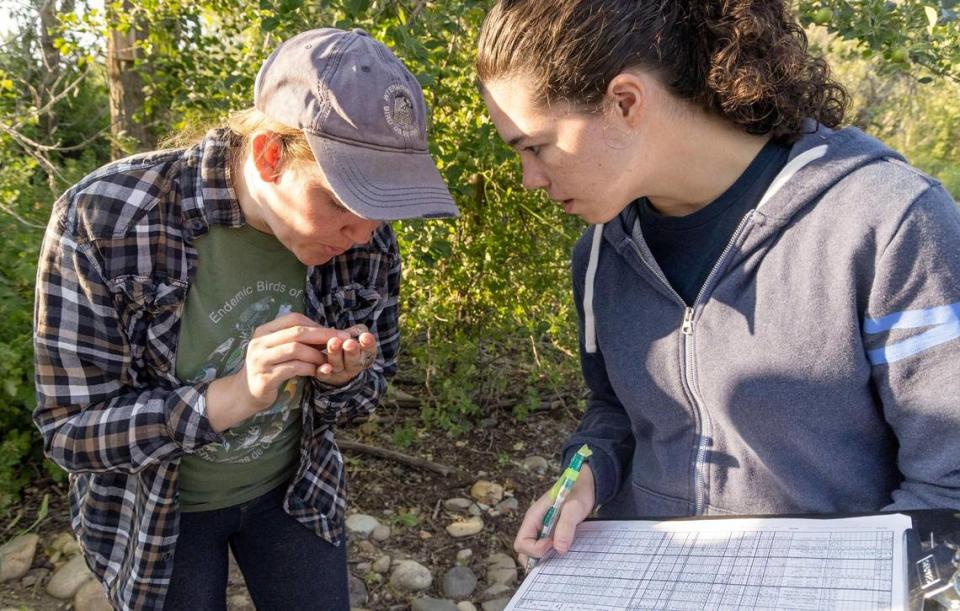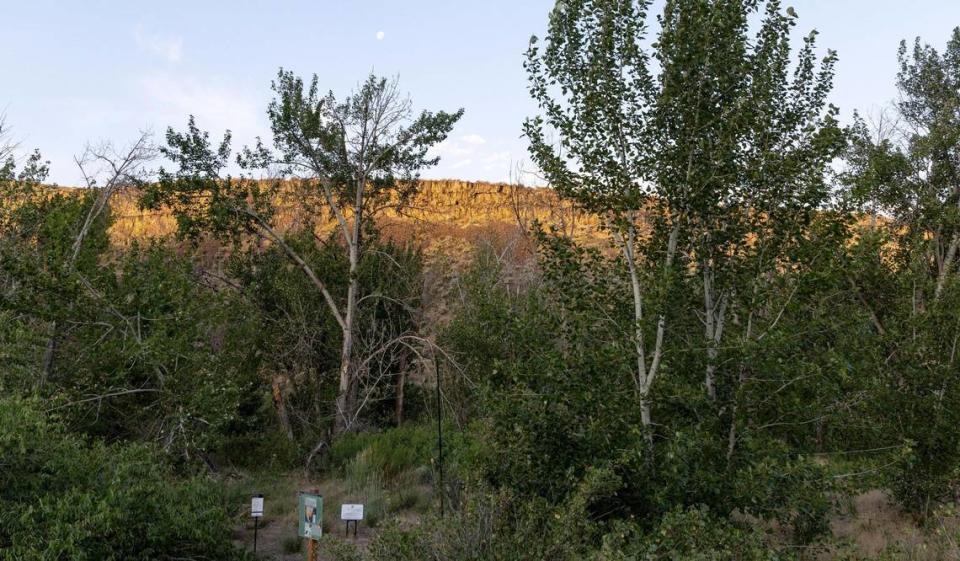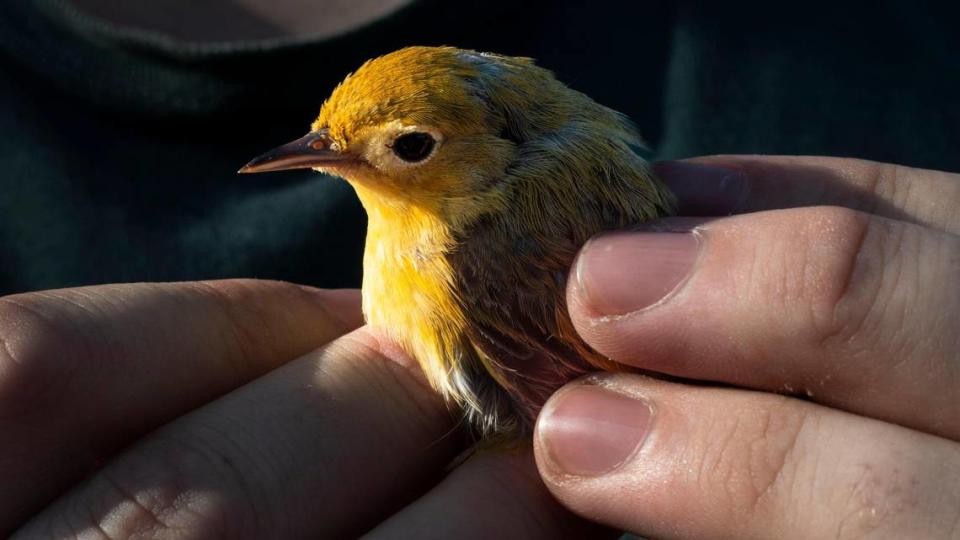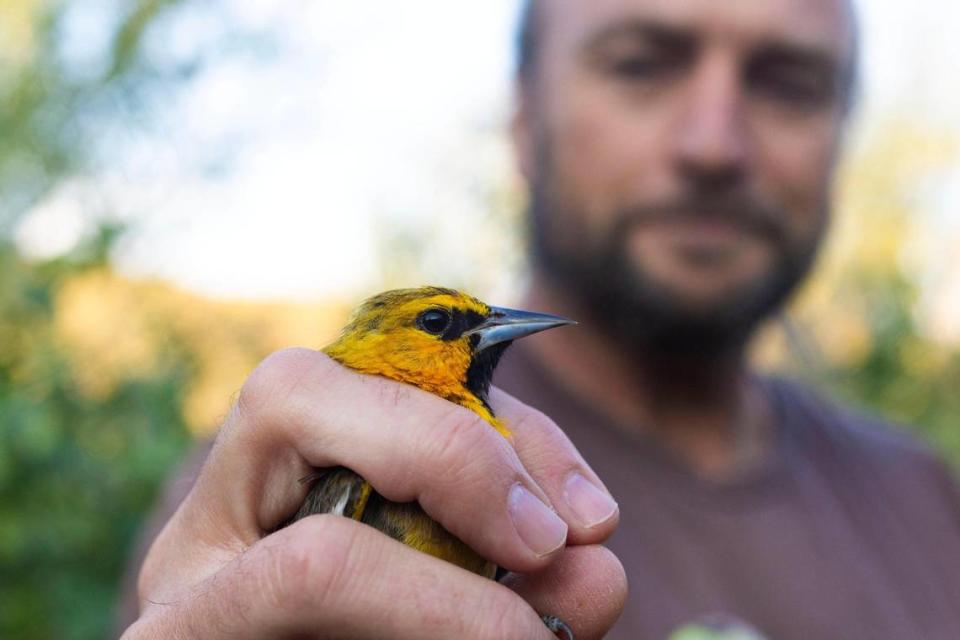Want to see Boise birds up close? Here, you can feel a wren in the palm of your hand
For weeks this summer and fall, a cadre of researchers and volunteers meets in the dark along the Boise River. This crew, led by scientists from Boise State University’s Intermountain Bird Observatory, gathers in the predawn to prepare for a day of research that’s over before noon.
They set up mist nets that will gently ensnare passing birds, which are then carefully removed, measured and released with a small metal tag, or band, bearing a serial number crimped around their legs.
These events serve multiple purposes: They allow Boise State researchers to keep tabs on local bird populations and give Treasure Valley residents perhaps the closest bird encounters they’ll ever experience — all while bringing in funds that help keep the program operating.
“The idea is to understand, on a small scale, the value of this habitat and the value of the Boise River for the birds that call it home,” Heidi Ware Carlisle, the education director for the Intermountain Bird Observatory, told the Idaho Statesman. “And then big-picture, the data we’re collecting today plugs into a continent-wide program.”
Many of the banding events take place at the Diane Moore Nature Center just west of Lucky Peak State Park, where the observatory has a research station. The site, nestled alongside a newly restored river side channel, is used for songbird banding. On summer mornings, students and volunteers capture young house wrens, spotted juvenile robins, bright yellow warblers and Bullock’s orioles and tiny black-capped chickadees.
They gently blow on the birds to part their feathers, gathering key information — like the birds’ age, sex and even whether they’re preparing to lay an egg — by observing the birds’ skull thickness, fat reserves and more through their translucent skin.
Visitors can drop by throughout the morning, watching up close as researchers gently measure the birds’ wings and weigh them — an especially quirky process during which the birds are put on a scale while upside down in film canisters and PVC pipe.
When each bird has been banded and its data recorded, bystanders have a chance to be part of the release.
“When we have visitors, the most fun thing to do is we have visitors hold out their hand, we’ll set a little bird on their hand and it will fly off when it’s ready,” Ware Carlisle said.
On a July morning last week, Rick and Cathy Stratton, of Boise, stopped by a public banding event to see the local wildlife. Cathy Stratton was the first visitor of the day to release one of the studied birds — a tiny house wren that promptly took flight.
“I wish he would’ve stayed a little longer in my hand, but it was fun,” Cathy Stratton said.
Researchers learned that the wren was a “bird of the year,” hatched this spring. Their summer banding helps the scientists understand which birds are breeding and how their young are faring. In the fall, more banding events help them gauge migration behavior.
The research is crucial, especially as bird populations around the world plummet with habitat loss, climate change and other human-caused factors.
The data from banding events is sent to the Institute for Bird Populations as part of a program called MAPS — Monitoring Avian Productivity and Survivorship.
Though many of the birds studied at the Diane Moore Nature Center are common species, Ware Carlisle said following their populations is still of utmost importance.
“You don’t want the situation of the peregrine falcon or the California condor where we realize just as they’re on the edge of the cliff, ‘We have to save these birds,’” she said. “What we want to do is monitor them now and say, ‘All right, they’re in a little bit of trouble. Let’s fix the problem before it becomes a big problem.’”
Ware Carlisle said letting visitors participate helps build an awareness for the issues birds are facing.
“As a scientist, I could collect all the data, I could know exactly what’s wrong, exactly what species need help, and exactly what to do about it,” she said. “But if I don’t have the public to support that, to fund it, to actually implement it, I’m not going to get any conservation work done.”
How to get involved in Boise bird banding
The Intermountain Bird Observatory asks visitors to the Diane Moore Nature Center to sign up on its Eventbrite page beforehand. There, visitors can get directions to the site and offer a donation — the suggestion is $7, but it’s not required. Events are scheduled at the Nature Center on July 20 and Aug. 1.
The observatory has other local banding stations with events open to the public. It will host daily bandings at its Lucky Peak station July 22 through Oct. 15, weather permitting. Find directions to the site at boisestate.edu/ibo/science/lucky. Groups smaller than 10 people do not need to schedule visits.
Researchers band songbirds at the Lucky Peak site, as well as raptors and owls later in the season.
There is one more hummingbird banding event for the year on Aug. 15. Hummingbird banding takes place at a private residence in Idaho City, and visitors must purchase a ticket to attend. Tickets cost $40 for an individual or $75 for a carload. Visitors can see the tiny birds up close and even feel their heartbeats. Find more details at eventbrite.com.
Anyone interested in volunteering with the program can sign up online at boisestate.edu/ibo/get-involved/volunteer/.

